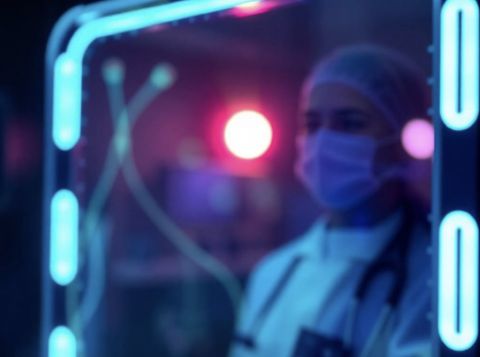Forecasting the Future: How to Stay Relevant in 2025 and Beyond

At Design Department, after decades in the field, we've witnessed countless trends emerge, some fading into hype, others fundamentally reshaping our industry. Looking ahead, we see clear directions where product development, particularly in medical technology, is truly headed. Staying ahead of these shifts isn't just an advantage—it's essential for relevance.
Here's where we believe the future lies:
Seamless Integration: The Connected Medical Ecosystem: We are rapidly moving into a space where medical devices no longer function in isolation. They are designed to seamlessly sync with hospital systems, pull in critical data from patient wearables, and even provide real-time data to insurance dashboards. This holistic approach means that manual, time-consuming processes like four-hour bedside checks in long-term care facilities will increasingly be replaced by continuous, real-time monitoring. This demands a new level of interoperability and connectivity in medical device design.
Simulation Explosion: Unprecedented Design Insight: By far, our biggest segment of growth at Design Department is in the use of sophisticated simulation software. These powerful tools provide unparalleled insight into design behavior, driving design optimization to previously impossible levels. The ability to virtually stress-test, refine, and predict performance before physical prototyping significantly reduces development cycles and costs, leading to more robust and efficient medical products.
Regulatory Evolution: Balancing Speed and Scrutiny: The market is pushing for faster approvals, particularly for incremental updates to existing medical devices. As regulatory agencies adapt, we anticipate a period where approvals for minor enhancements become more streamlined. However, this will likely be balanced by tighter scrutiny on the most innovative solutions, especially those driven by AI-based decision-making. Staying agile and proactively engaging with evolving regulatory guidelines will be paramount.
Collaborative Design Ecosystems: The New Norm: The shift towards distributed teams and real-time collaboration is rapidly becoming the norm, not the exception. We observe that larger companies are navigating a post-COVID identity crisis, instinctively wanting people back in the office but inadvertently driving top talent out of their organizations by resisting flexible work models. Embracing the world as it exists, with its emphasis on cloud collaboration and virtual communication, will allow some companies to thrive while others struggle to adapt. This dynamic impacts how medical device development teams are structured and operate.
Why It Matters: If your organization isn’t actively planning for these profound shifts, there’s a significant risk that someone else will. They'll innovate faster, optimize more effectively, and ultimately leapfrog you in the market. Adaptability and foresight are the keys to sustained success in the evolving landscape of medtech.
Ready to forecast your future and leverage these emerging trends for your next medical device project? Design Department specializes in helping organizations like yours navigate these shifts and stay ahead of the curve. Contact us today to discuss your innovation strategy.
